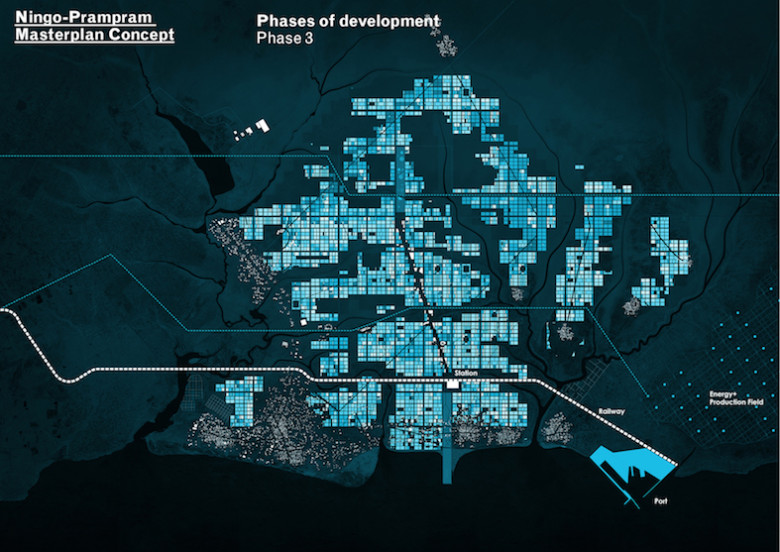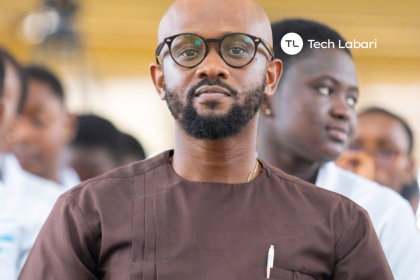Accra, the capital of Ghana, is one of the fastest-growing cities in Africa. With a population of about 4.6 million people, Accra faces many challenges such as congestion, pollution, inadequate housing, flooding, and poor infrastructure.
To address these issues, the government of Ghana, in collaboration with UN-Habitat and other partners, initiated the Accra City Extension Project (ACEP) in 2015.

The project aims to create a new urban extension in Ningo-Prampram, a district located about 60 km east of Accra, along the coast. The project covers an area of about 150 square kilometers and is expected to accommodate up to 1.5 million people by 2050.
..Some critics have argued that the project does not address the needs and preferences of the existing and potential residents of the area, such as their cultural identity, livelihoods and social networks
The vision of the ACEP is to create a sustainable, inclusive, and resilient city that provides affordable housing, employment opportunities, social services, and green spaces for its residents.
The project is based on a participatory and flexible planning approach that involves various stakeholders such as local authorities, traditional leaders, communities, developers, and investors.
The project also follows a phased implementation strategy that allows for adaptation and innovation over time.
Setbacks and Challenges
However, despite the ambitious goals and the innovative methods of the ACEP, the project has faced some challenges and criticisms from different quarters. Some of the main issues that have been raised are:
- Land ownership and compensation: The project area is divided between two traditional authorities, Ningo and Prampram, who have different claims and expectations regarding land ownership and compensation.
The project has also been accused of displacing some local farmers and fishermen without adequate consultation or compensation. - Environmental impact: The project area is located in a low-lying coastal zone that is prone to flooding and erosion.
The project has been criticized for not taking into account the environmental impact of its infrastructure development, such as roads, bridges and drainage systems, on the natural ecosystems and biodiversity of the area. - Financial viability: The project relies heavily on private sector involvement and investment to finance its development.
However, the project has not been able to attract enough investors due to various factors such as lack of clear regulations, incentives, and guarantees, high-risk perception, and low demand for housing in the area. - Social inclusion: The project aims to provide affordable housing for all income groups, especially the low-income segment.
However, some critics have argued that the project does not address the needs and preferences of the existing and potential residents of the area, such as their cultural identity, livelihoods and social networks.
They have also questioned the affordability and accessibility of the housing units and services that will be provided by the project.
…the ACEP is not a failure but rather a work in progress that faces some challenges but also has some strengths and opportunities.
Opportunities
The project is still in its initial stages and has a long way to go before it can achieve its vision. The project also has some strengths and opportunities that can be leveraged to overcome its challenges and improve its outcomes. Some of these are:
- Technical expertise: The project has benefited from the technical expertise and guidance of UN-Habitat’s Urban Planning and Design LAB, which has developed a concept plan for the project based on international best practices and local context.
The project has also involved other experts and partners such as MLA+, Creative Industries Fund NL, Ghana Urban Lab and others who have contributed to various aspects of the project such as design, research, communication and capacity building. - Community engagement: The project has adopted a participatory approach that involves various stakeholders in its planning and implementation process.
The project has conducted several meetings and workshops with local authorities, traditional leaders, communities, developers and investors to solicit their inputs and feedback on the project.
The project has also established an implementing committee that oversees its progress and coordination. - Innovation potential: The project has a high potential for innovation as it is one of the first planned city extensions in Africa that aims to create a sustainable, inclusive and resilient city. The project can serve as a model and a learning platform for other similar initiatives in Ghana and beyond.
In conclusion, the ACEP is not a failure but rather a work in progress that faces some challenges but also has some strengths and opportunities. The project requires continuous monitoring, evaluation, and improvement to ensure that it meets its objectives and delivers its benefits to its stakeholders.
The project also requires more collaboration, communication, and commitment from all parties involved to ensure its success.
Catch up on news and other tidbits on our WhatsApp Community Page, Twitter/X, and subscribe to our weekly newsletter to ensure you don’t miss out on any news.










